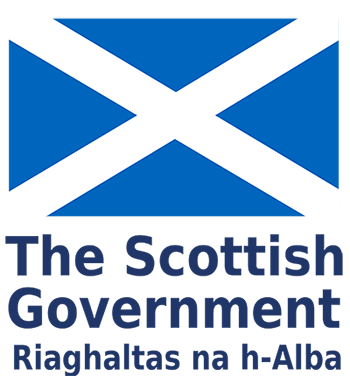
Scottish Government: Full-service programme delivery
ScotPayments is a scalable payments platform through which public sector organisations in Scotland can make quick and secure payments to payees. It is currently in a private Beta phase, offering a minimal viable service while the service is refined and developed with user feedback.
A new payments platform to deliver value for money
The Scottish Government is investing in ScotPayments as one of the Common Platforms prioritised in its ambitious Digital Strategy to support the transformation of public services. There are more than 200 public bodies in Scotland, collectively making millions of payments a year. By digitising the end-to-end process, the ambition is for the service to process 25 million transactions annually. ScotPayments will help reduce processing time, effort and costs, as well as reducing cyber and fraud risk, while providing greater transparency and a better user experience.
Through a series of successful tenders, Scott Logic has been the technology and implementation partner at each stage of ScotPayments’ delivery, from Discovery through to the Private Beta. As the programme scaled up in the Beta phase, Scott Logic was trusted to oversee all aspects of implementation through a full-service delivery team.
Working as part of a multidisciplinary programme team embedded with SG Digital Directorate digital professionals, we provisioned designers and engineers to cover everything from initial concept designs through to maintaining the operation of the live service.

End-to-end programme delivery
Scott Logic’s involvement began with the Discovery phase in which a small team of our engineers collaborated with the Scottish Government to resolve key uncertainties, define the strategy and scope, and build a proof of concept. Then in the Alpha phase, we helped shape the full business case, including proofs of how the payments service would integrate with other services, and how it would manage both inbound and outbound payments. In addition, our team supported the programme in creating and presenting quality outputs to various senior leaders as part of the robust governance arrangements.
The programme moved into the Beta phase and our full-service delivery team set to work maturing the platform in preparation for a Private Beta with ScotPayment’s first service user, Independent Living Fund (ILF) Scotland. The team comprised all the required disciplines, including development, test, architecture, UX design and service management. Using feedback from the Private Beta, our team has been refining the platform and designing new features in preparation for onboarding new service users.


We applied our ‘One Team’ approach in working with Scottish Government stakeholders. Through a regular cadence of agile meetings, our team collaborated closely with the digital team’s Product Owners and Business Analysts to refine the delivery backlog. In close consultation with the client’s governance forums, we shaped the longer-term delivery roadmap and agreed quarterly milestones. These three-month delivery timescales helped keep our team focused on imminent targets and allowed us to deliver frequent, tangible value – whether in the form of a new feature, a new piece of functionality, or a maturing of platform capability.
Like all major digital programmes, ScotPayments was bound under the governance of the Technology Assurance Framework (TAF) and the Digital Scotland Service Standards (DSSS). DSSS sets out 14 best-practice criteria for programmes to work towards to ensure that services are continually improving and used-focused. With the support of the User Centred Design function in SG Digital and with support from Accessibility colleagues, our team built a sound grasp of the standards. Throughout delivery, they documented their practices, processes, and key design decisions.
Truly user-centred service design
The ScotPayments programme exemplified one of the core principles of the Scottish Government’s Digital Strategy – that digital services should be inclusive, ethical, and user-focused. Service Design is at the heart of the programme and users have shaped every aspect of the service. The programme had a strong focus on this from its inception, with Service Design and User Research professionals being members of the core team.
In close collaboration with Scottish Government user researchers, our designers made up part of the programme’s User Centred Design workstream. As part of this work, our team contributed code and research findings back into the Scottish Government Design System in cases where there was no existing pattern or where our input could add value to the emerging thinking of the Design System team.
A secure common platform built to ISO standards

As a secure common platform handling financial transactions, ScotPayments needed to be easy to integrate and easy to test rigorously. Consequently, our engineers designed and implemented an event-based architecture composed of cloud native microservices coordinated by Apache Kafka. For maximum interoperability and reusability, there is no customer-specific logic in the platform's core and payments are made via integration with third-party payment providers; this offers the capability to swap out the payment provider easily, avoiding vendor lock-in.
We also designed ScotPayments to be agnostic in relation to payment methods; support for BACS payments has been implemented to date, and more payment methods can be added with ease in future releases – including high-value payments (CHAPS), Single Euro Payments (SEPA), Faster Payments, international payments, and inclusive payments to support individuals who don't have access to mainstream banking – all within the same common platform and interface.
Our team built APIs that follow Open Banking Standards which facilitate the secure and rapid exchange of payments between systems, and help to prevent fraud. For service users with older technology that cannot yet connect to ScotPayments using APIs, our team built an adaptor which makes integration possible. We also designed and implemented ScotPayments to conform with two international standards: ISO 20022 which defines universal standards for electronic financial data interchange, and which underpins the Bank of England’s Common Credit Message initiative; and ISO 20000 which defines the international standard for IT service management, underpinning ScotPayments’ ongoing resilience and security.
Indeed, the security requirements of the platform were of paramount importance; successful adoption of ScotPayments was dependent on trust, reliability, availability and ease of use. To this end, the government’s security experts were ‘in the room’ with the Scott Logic team from the start, helping design and deliver a platform that was Secure by Design, with oversight provided by the Scottish Government’s Security Design Authority. For added confidence in our team’s secure engineering, the platform’s security architecture was iteratively tested and validated by third-party security consultancy, ControlPlane.

Preparing ScotPayments for Live service
After 18 months in Private Beta, ScotPayments had processed approximately £20 million in payments with private Beta partner ILF Scotland as of January 2024. The platform will continue to be refined and developed in Beta to meet the needs of new service users from across the public sector in Scotland until it enters Live service. In parallel, Scott Logic’s full-service delivery team will scale back over time and upskill the Scottish Government’s software engineers towards self-sufficiency in maintaining the platform. This process of knowledge transfer is already underway and will continue through a mix of documentation, demos, and deep dives into specific aspects of the platform.
Scott Logic’s ambition is to support the Scottish Government and the wider public sector across Scotland, providing value-for-money partnerships as demonstrated by our other engagement on the ScotAccount digital identity programme.
As ScotPayments progresses towards Live service, we are proud to have played a part in supporting the Scottish Government to realise its strategic vision of a changing nation thriving in the digital world.
